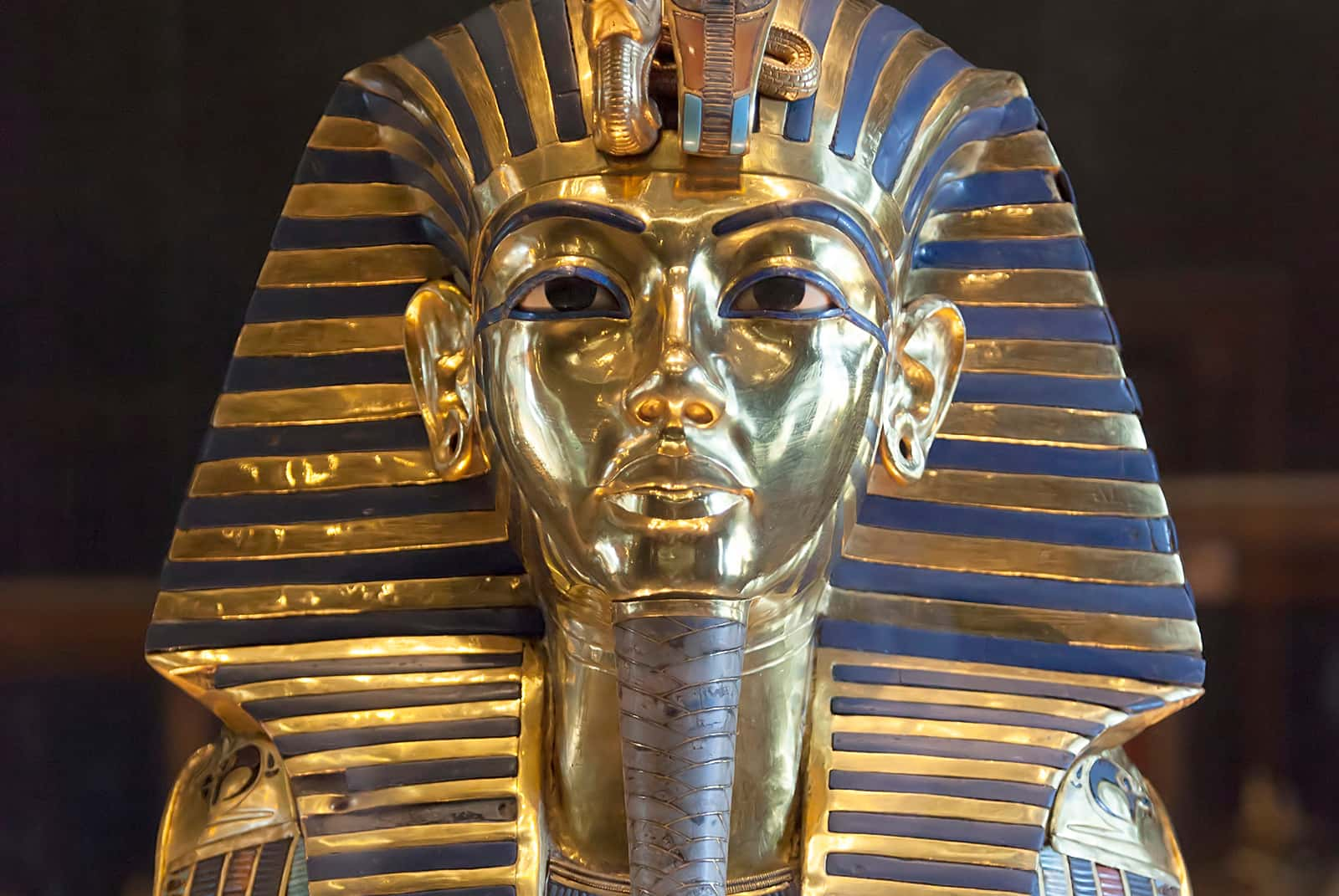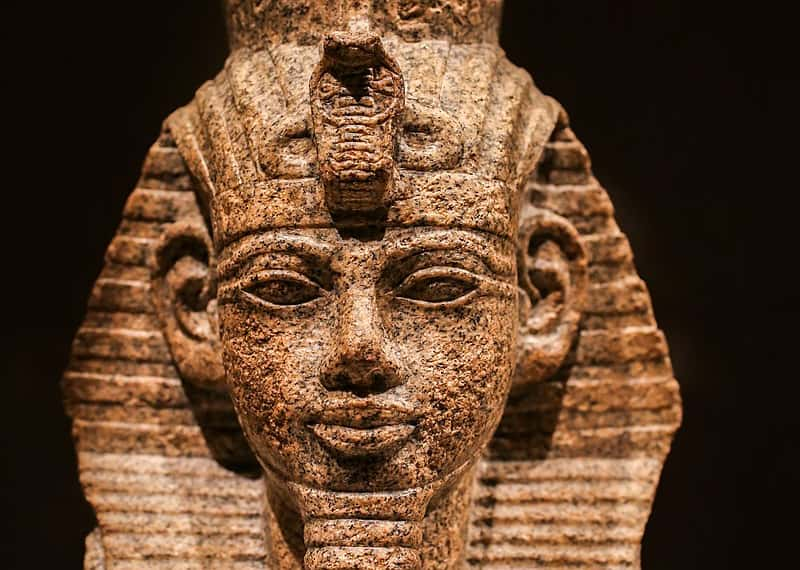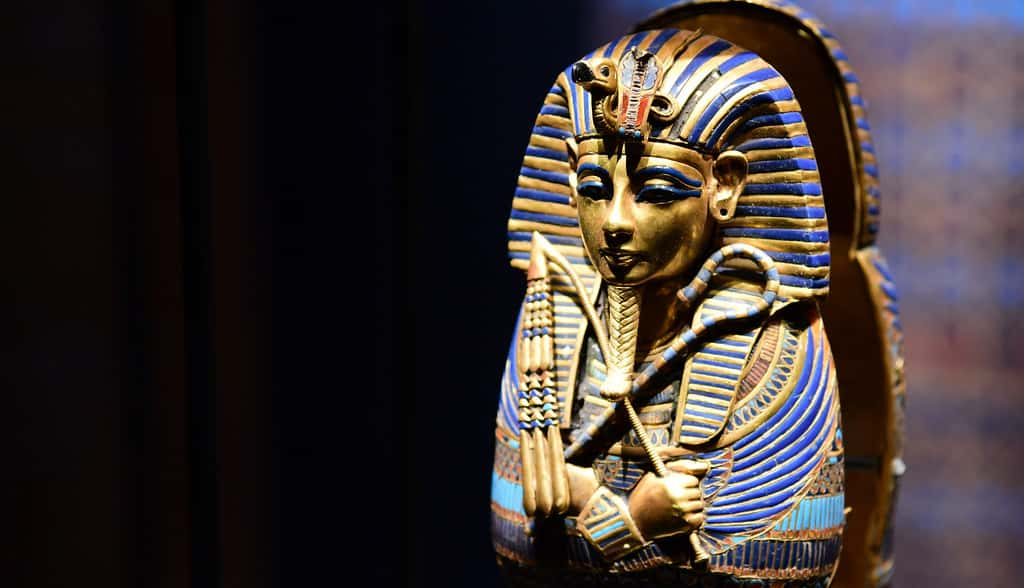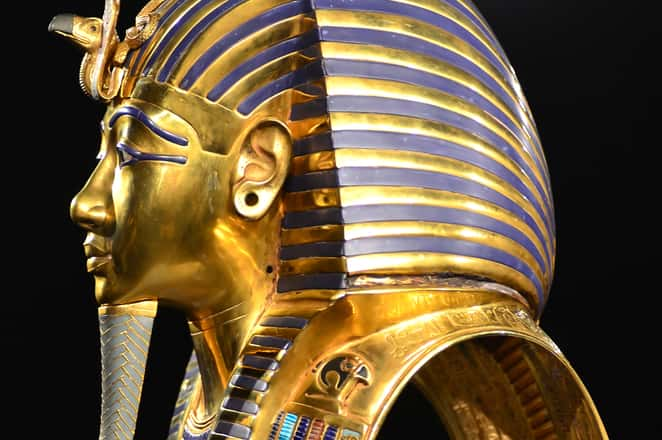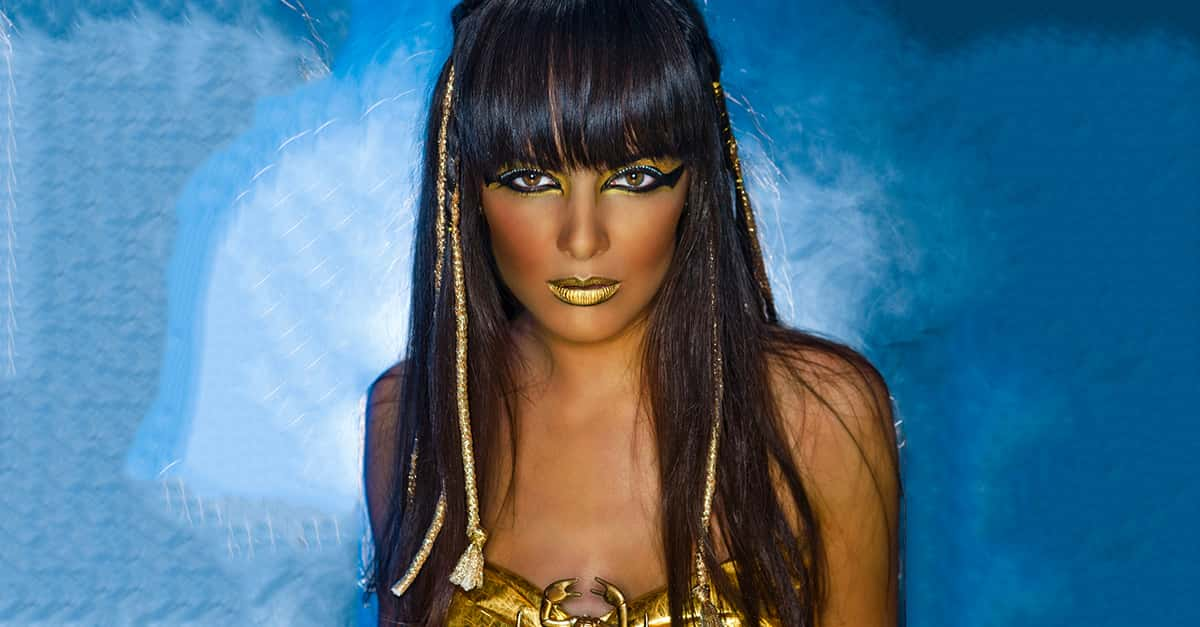Unraveling The Mysteries Of King Tut
Tutankhamun, otherwise known as King Tut, was an Egyptian pharaoh who lived in Egypt’s 18th dynasty. While he only ruled for around 10 years between 1332-1323 BC, the discovery of his tomb in 1922 made him the world's most famous pharaoh and gave us incredible artifacts that have been feature in exhibits around the globe—it also gave rise to rumors of an ancient curse.
But is there any truth to those rumors? And why are we still so fascinated by this young king? Let's find out.

1. Homage to a God
While we know him as "King Tut", that's not the name he was born with. His original name was Tutankhaten, which translates to “living image of the Aten". The Aten was the sun god that his parents worshiped, and they wanted to name their baby after him.
After a few years on the throne, when he was still barely a teenager, he decided to stop worshiping Aten and start worshiping Amun, who was the King of the Gods. His name Tutankhamun means “living image of Amun".

2. Not How They Knew Him
Egyptian Kings can’t have just any old name: They have five. King Tut's last two names, known as the prenomen and nomen, were the names written on his monuments. So while the world knows him by his nomen Tutankhamun, the Egyptians knew him by his prenomen, Nebkheperure.
 Flickr
Flickr
3. The Boy King
Tut was just a child when he became Pharaoh. When his father passed on, he was only seven, and he became king two years later at nine years old. Nicknamed the Boy King because of his young age, he wasn’t even old enough to make important decisions.
Most of the decisions would have been made by viziers (high ranking government officials), who would rule on behalf of the monarch until he/she was of age.
 Tut, 2015, Muse Entertainment Enterprises
Tut, 2015, Muse Entertainment Enterprises
4. Flip Flop
When Tut changed his religion, he wasn’t exactly going to a new religion, he was switching back to the old one. Prior to his father’s rule, the people worshiped the god Amun, but when his father became king, he changed his religion and worshiped the sun god Aten. This decision didn’t exactly make Tut's father popular with the people, who don’t seem to respond well to having their gods messed with.
Tut went back to worshiping Amun, which was a pretty smart move on his part. It helped win him the support of the people, which is key when you’re a king.
 Tut, 2015, Muse Entertainment Enterprises
Tut, 2015, Muse Entertainment Enterprises
5. Seniority
In the days of King Tut, it was nothing unusual to marry in the (very close) family to maintain bloodlines. In fact, his mother and father were brother and sister, which also made his mother his aunt. When Tut was about nine, he married his half-sister Ankhesenamun, who was 13.
Ankhesenamun was the third of six daughters fathered by Akhenaten, and she was Tut’s half-sister as well as wife. She and her two older sisters Meritaten, Meketaten were known as the Senior princesses.
 Tut, 2015, Muse Entertainment Enterprises
Tut, 2015, Muse Entertainment Enterprises
6. Passed Around
Before Ankhesenamun was married to Tut, there is evidence that she was actually married to her own father.
 Tut, 2015, Muse Entertainment Enterprises
Tut, 2015, Muse Entertainment Enterprises
7. Official Advisor
One of Tut’s chief advisors during his early reign was likely Ay, who was the famous Nefertiti’s father. Knowing that Tut was still a child, he had a heavy influence on the ruler. It was Ay's idea to revert back to the old religion and for Tut to change his name. That would definitely explain how a child was making such complex decisions.
 Tut, 2015, Muse Entertainment Enterprises
Tut, 2015, Muse Entertainment Enterprises
8. Burying a King
General Horemheb was one of Tut’s advisors. He is also one of his suspected assassins, and he became Pharaoh after the passing of Tut’s first successor. Upon becoming Pharaoh, Horemheb destroyed all records of his immediate predecessors and put his own name on their monuments. Horemheb was so successful at erasing them that many Egyptians forgot they ever existed.
This belief continued all the way into the 20th century, when their tombs were accidentally discovered.
 Tut, 2015, Muse Entertainment Enterprises
Tut, 2015, Muse Entertainment Enterprises

History's most fascinating stories and darkest secrets, delivered to your inbox daily.
9.Tiny Tomb
King Tut is buried in a cramped tomb cut into the floor of the main valley in the Valley of Kings, and likely not by design. The most prevalent theory is that his successor Ay pulled a fast one and switched tombs on him. Incidentally, when Ay perished, he was buried in a more extravagant tomb in the Western Valley. Coincidence? I think not!
10. Not What They Thought
Since the discovery of Tut’s tomb, archaeologists have been searching for what they were almost certain was a hidden room behind the wall of Tut’s tomb. A popular theory about its contents was that Queen Nefertiti’s tomb was back there, but new research has shown that there’s nothing there.
11. The Wrath of a Mummy
The myth of the Pharaoh’s Curse is well known around the world, and some Egyptian tombs do have curses inscribed on the walls, but that's not the case with King Tut. Evidence supporting the existence of The Pharaoh's Curse is largely baseless.
The flames of the myth were fanned when novelist Marie Corelli referred to the superstition shortly after Lord Carnarvon (who was at the opening of Tut's tomb in 1922) got an infection from a mosquito bite. When the infection later took his life, people were more than happy to believe that she was correct, and the curse was real.

12. Perpetuating the Myth
Lord Carnarvon, the financial backer for Carter’s expedition, was determined to keep everyone away from Tut’s tomb until after all of the treasures had been removed, but he did make an exclusive deal with the Times for access, which seriously ticked off the rest of the journalists.
Perhaps seeking revenge, one paper claimed that a curse was written inside Tut's tomb. Surprise! It wasn't.
13. Richer Than the Queen
In his short life, Tut managed to amass a great deal of wealth, as evidenced by the treasures found in his tomb. The gold mask that was placed over his mummified face weighed 20 pounds, and it took Howard Carter and his team over 10 years to catalogue all 3,500 articles found inside the tomb. The phrase “you can’t take it with you” certainly didn’t apply here.
14. Frail Boy
Inbreeding might have seemed like a good idea to the ancient Egyptians, but Tut was proof of why it’s not. According to recent DNA testing, Tut had malaria, a club foot, and used a cane to walk. Let’s just say he wasn’t participating in any strength games.
 Tut, 2015, Muse Entertainment Enterprises
Tut, 2015, Muse Entertainment Enterprises
15. Identifying the Bodies
Thanks to the DNA examination of King Tut, researchers were able to create a family tree going back five generations. The study tested Tut as well as the mummified remains of 10 other royals whom they suspected but couldn’t prove for sure were related to the boy king.
The tests helped them to identify other mummies: Akhenaten as his father, Amenhotep III as his grandfather, Queen Tiye as his grandmother, and his mother/aunt (whose identity is still unknown). Amazing what science can tell you!
16. The Elder Lady
King Tut’s grandmother Queen Tiye was quite a remarkable lady. When she was 11 or 12, she married King Amenhotep III and played an enormous role in his rulership. Her name frequently appears beside or following his in legal decisions of all kinds, and on numerous objects.
She was also so well respected that many issues were dealt with directly through her. As a result, she’s the first Egyptian queen to be recorded in ancient records. Her portraits also contain elements that were typically reserved for a king, demonstrating just how important she was. In short, she was some queen!
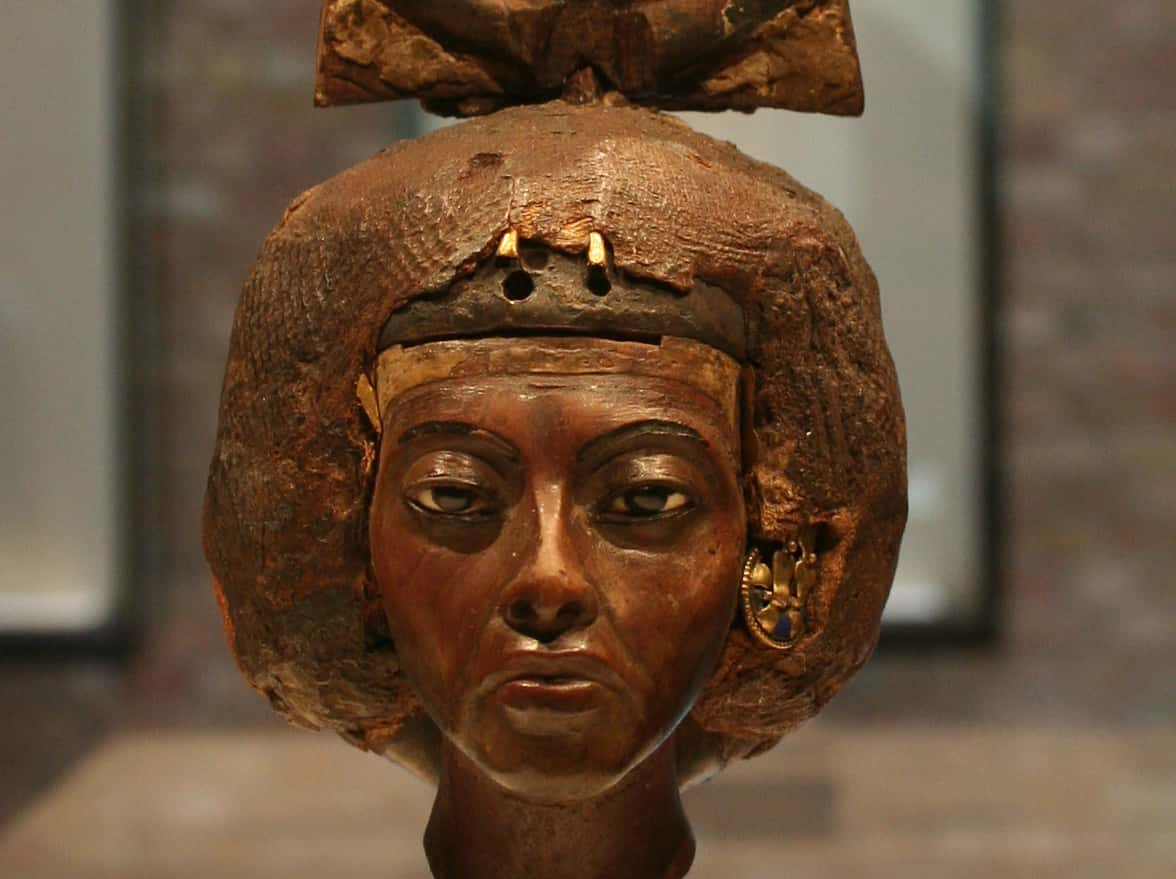 Wikipedia
Wikipedia
17. The Opulent Ruler
Tut’s grandfather Amenhotep III was born at a pretty good time. His father left him a large inheritance, and Egypt was an extremely powerful country. He implemented new building programs, was an excellent diplomat, and "gifted" other countries with gold so they’d be in his debt and do whatever he wanted.
When he passed on, rulers from around the world sent letters of condolence to the queen, expressing their grief over his passing and their hopes for continued good relations with their son. Sadly, the son was not nearly the ruler his father was.
18. Death Mask
The death mask of King Tut is possibly the most famous symbol of Ancient Egypt. Royal death masks were used to cover the faces of the mummy so that the spirit would recognize the body in the afterlife. The mask itself is a likeness of Tut and is literally priceless. It’s made of solid gold and decorated with semi-precious stones. The eyes are made with obsidian and quartz, and on the back are spells and texts from the Book of the Dead.
Today the mask is on display at the Egyptian museum in Cairo.
 Wikipedia
Wikipedia
19. Flesh of the Gods
In case you were wondering why Royal death masks were made from solid gold, it wasn’t to show off how rich they were (well, maybe a little). The ancient Egyptians believed that gold had magical energy with important religious properties. Gold never tarnished, it wouldn’t deteriorate over time, and because of its sheen, they thought it had the powers of the sun God. This is also why several of the artifacts found in Tut’s tomb were made of gold.
20. Houston, We Have a Problem!
Tut’s mummy was laid inside a series three coffins that fit inside one another like Russian nesting dolls. During the funeral ritual, the coffins were supposed to have been put inside a rectangular stone sarcophagus, but there was a teeny tiny little problem: The outer coffin was too big, and edged out of the sarcophagus, keeping the lid from fully closing.
The carpenters came in and cut away the coffin’s end, solving the problem. 3,000 years later when Howard Carter explored Tut’s tomb, he discovered the cut off pieces at the foot of the sarcophagus. Obviously they didn’t care about cleaning up!
21. One of These Things is Not Like the Other
The three coffins of King Tutankhamun should have all been alike in style, shaped to resemble Osiris, the god of the underworld. The two outer coffins were definitely similar, but the middle coffin wasn’t. The face didn’t look like the face on the other coffins, and it didn’t look like the face on Tut’s death mask.
Egyptologists have concluded that this coffin, along with some of the goods found in his grave, were actually meant for someone else: probably the mysterious Neferneferuaten. He or she might have been Tut’s immediate predecessor, but nothing is known about the individual or why Tut ended up in this coffin.
22. In Search of a Wife
It took 3,000 years for archaeologists to discover King Tut’s tomb, and now researchers think they might have found his wife Ankhesenamun’s lost tomb. A recent photo showed archaeologists excavating the potential entrance to a royal tomb that may be hers. After the demise of Tutankhamun, Ankhesenamun married Ay, but after that she essentially disappeared from record, so she’s pretty much been M.I.A. since her passing at age 26.
 Tut, 2015, Muse Entertainment Enterprises
Tut, 2015, Muse Entertainment Enterprises
23. A Royal Screw Up
In 2015, King Tut’s death mask underwent a nine-week restoration, which included the reattachment of Tut’s beard. The beard snapped off while staff were cleaning the mask previously. The staff shouldn’t feel too bad though: It turns out the beard was found already separated from the mask when Tut’s burial chamber was discovered, and it wasn’t reattached until 1946. At least this time it only took nine weeks.
24. More to Discover
Believe it or not, the discovery of King Tut’s tomb was based on a lucky hunch. Throughout the 19th century and beyond, archaeologists had been exploring the now infamous Valley of Kings, and many were convinced that they’d found all there was to find. Archaeologist Howard Carter was not one of those people.
He had a hunch that an obscure king from the 18th dynasty was buried there, and he was right.
 Flickr
Flickr
25. A Room of Marvels
Tut's burial antechamber was full of treasures and was the main access point for all of the other rooms. Carter and his team discovered everything from couches to chests, to baskets to beds, totalling about 700 items. While it’s not known for sure, it’s speculated that they were Tut’s everyday items, and the intention was that they would follow him into the afterlife.
26. Guarding the Entrance
Aside from all of the other treasures found in Tut’s antechamber, there was also one more amazing discovery. Two life-sized statues were positioned facing each other on either side of the entrance to Tut’s burial chamber. Each of the statues also had its own inscription and a different headpiece.
27. A King's Ransom
Although Tut’s tomb was considered to be less grand than the other pharaohs, he more than made up for it with his innermost coffin. The outer two coffins were made of wood and covered with gold sheet, but the coffin that held Tut’s mummy was made from thick beaten gold.
The gold itself is worth at least 1 million British pounds, but everything that’s been learned from Tut so far? Priceless.
28. No Curse Here
Thanks to modern science, the famous Curse of the Pharaoh has been proven to be nothing more than a story. In 2002, the British Medical Journal studied the lifespans of 44 Westerners, half of whom were identified as being present at the opening of Tut’s tomb, and half who weren’t but were still in Egypt at the time.
The study found that survival had virtually no connection to exposure to the mummy, and there was no supernatural curse at work.
 Tut, 2015, Muse Entertainment Enterprises
Tut, 2015, Muse Entertainment Enterprises
29. Protecting the Tomb
Since its discovery almost 100 years ago, King Tut’s tomb has become a highly popular tourist destination. In fact, the tomb is so popular that in an effort to preserve what’s left of the tomb, Egyptian conservationists created a life-sized replica tomb that will hopefully satisfy curious visitors. By using technology such as 3D printing, they recreated as many of the tiny details from the tomb as possible, right down to the individual grains of sand.
While the installation of the replica tomb was met with some skepticism from both the media and tourists, its creators are adamant that it’s currently the best option for protecting the tomb, as there is no technology available to undo the damage that’s already been done.
30. Burial Jars
At the time of embalming, Tut’s liver, intestines, lungs, and stomach were removed from his body and stored in what were known as canopic jars. The ancient Egyptians believed that taking the organs into the afterlife was essential and therefore took pains to preserve them. The jars were highly artistic, and the lids were normally carved to depict each of the gods who were the sons of Horus.
Tut’s canopic jars were somewhat different than usual. Instead of featuring the faces of the Gods, his lids were carved into likenesses of his face. Why this was done isn’t known, but one theory suggests that because of his early demise, he needed to be more connected to his organs than other kings had been.
31. Hasty Funeral
One particularly unfortunate part about dying both unexpectedly and young is that it doesn’t allow for a lot of time to plan an elaborate funeral. Tut's burial and tomb were arranged fairly quickly, but by today’s standards, it was an eternity. The whole kit and caboodle from embalming and mummification to the funeral would have taken about 70 days, at which time there was a royal procession that took him to his tomb and sealed him, or at least his mummy, in there for eternity.
32. Reviving the Senses
After Tut’s passing, the new pharaoh Ay conducted the all-important ritual called the Opening of the Mouth Ceremony. In it, the mummified senses of the departed king are revived, giving him the ability to eat, drink, and speak in the afterlife. As soon as that was done, the living got to enjoy a feast and a celebration, while Tut started his long trip to the afterlife.
33. Chariots of Fire
According to a study of the technical specs of King Tut’s chariots, he drove through the desert like a racecar driver. The study revealed that the vehicles contained highly sophisticated engineering and were basically the Ferraris of their time.
 Tut, 2015, Muse Entertainment Enterprises
Tut, 2015, Muse Entertainment Enterprises
34. A Feathery Fan
Multiple fans were buried with King Tut, one of which was an ostrich-feather fan found close to his body. The writing on the handle showed that the king had taken the feathers (now no longer extant) from his own hunt. Ostrich feathers were highly prized items, and for Tut, hunting the birds would have been a substitute for actual battle.
35. Where Did Pharaoh’s Heart Go?
In ancient Egypt, the heart, not the brain, was considered to be the organ of reasoning, and was therefore essential to the afterlife. Usually, the heart was preserved, but in Tut’s case, his mummy had no heart. As a substitute, his undertakers provided him with a scarab amulet, adorned with a funeral spell.
It is possible that the missing heart was a result of carelessness, but it’s also possible that Tut was so far away from home when he perished that by the time they got him back for embalming, it had deteriorated too much to save it.
36. These Are a Few of His Favorite Things
When King Tut’s tomb was unearthed, researchers found an iron dagger that was still remarkably sharp thousands of years later. Having a sharp dagger is not strange in itself, but the dagger’s origin is quite mysterious. Scientists have tested the metal and determined it came from a meteorite, and the ancient Egyptians most likely didn’t have the technology to craft a weapon from meteorite debris, so it either came from another more advanced civilization or, as some are convinced, it might have been left behind by aliens.
37. Up in Flames
When King Tut’s tomb was discovered, his mummified body was strangely charred, as if it had somehow been engulfed in flames from inside his sealed coffin. But when archaeologists finally solved the riddle, they were left with an even stranger mystery. Researchers discovered that Tut and coffins were covered in a black liquid made from resin and oil that literally caused him to go up in flames.
The best guess of the scientists who examined the charred mummy is that the oils from the liquid soaked into his burial shroud, and once they were exposed to oxygen, they ignited and literally cooked the king. However, why he was covered in the liquid remains more of a mystery, though researcher's theorize the black substance was used to make him look more like Osiris.
38. Twin Tragedies
Based on evidence from King Tut's tomb, he had his wife had two daughters: the remains of twin babies were found in his burial place. However, both of their daughters were tragically stillborn, and DNA testing revealed that at least one of them had skeletal deformities.
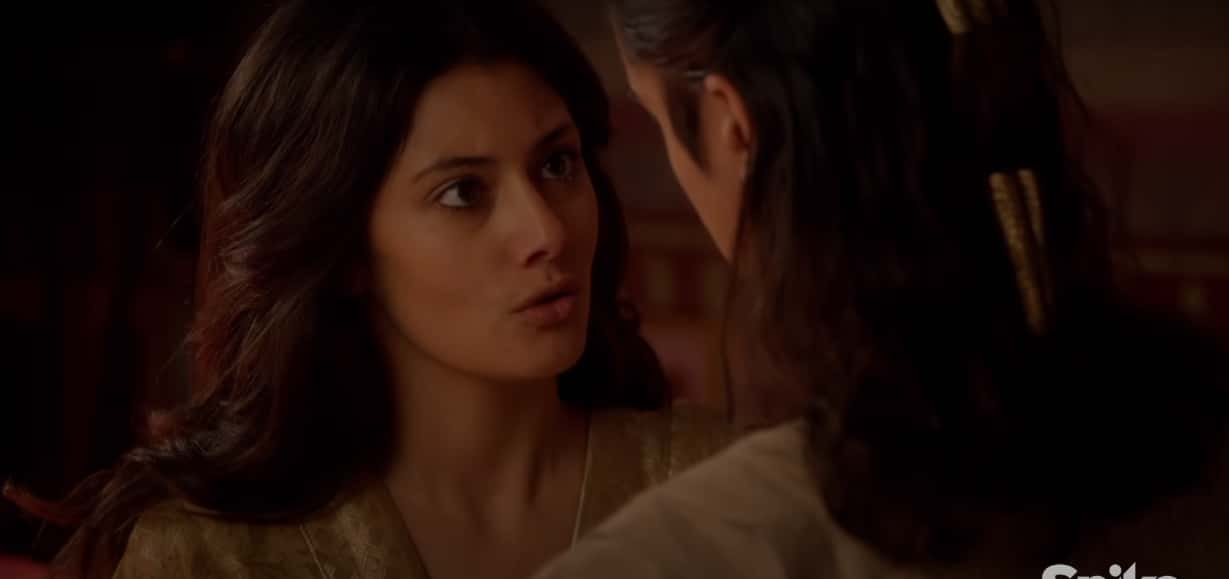 Tut, 2015, Muse Entertainment Enterprises
Tut, 2015, Muse Entertainment Enterprises
39. Seeking Answers
Whenever someone, particularly a king, dies young for no apparent reason, there are always questions. Over the years, there has been speculation as to whether or not Tut was slain, and there was certainly no shortage of suspects. Other theories suggested a chariot accident (possible), a hippo accident (more plausible than you’d think), or an old-fashioned combination of malaria, a broken leg, and a bone disorder.
Whatever the cause, it remains one of history’s most enduring mysteries.
 Tut, 2015, Muse Entertainment Enterprises
Tut, 2015, Muse Entertainment Enterprises
40. Ancient Car Crash
In King Tut’s time, chariots were the primary method used to carry kings around, and recent evidence suggests that Tut was in a terrible chariot crash shortly before his demise. Similar to a car accident, the crash shattered his rib cage, damaged many of his internal organs (including his heart), and broke his pelvis.
 Tut, 2015, Muse Entertainment Enterprises
Tut, 2015, Muse Entertainment Enterprises
Sources: 1, 2, 3, 4, 5, 6, 7, 8, 9, 10, 11, 12, 13, 14, 15, 16, 17, 18, 19, 20, 21, 22, 23, 24, 25, 26, 27, 28, 29, 30, 31





